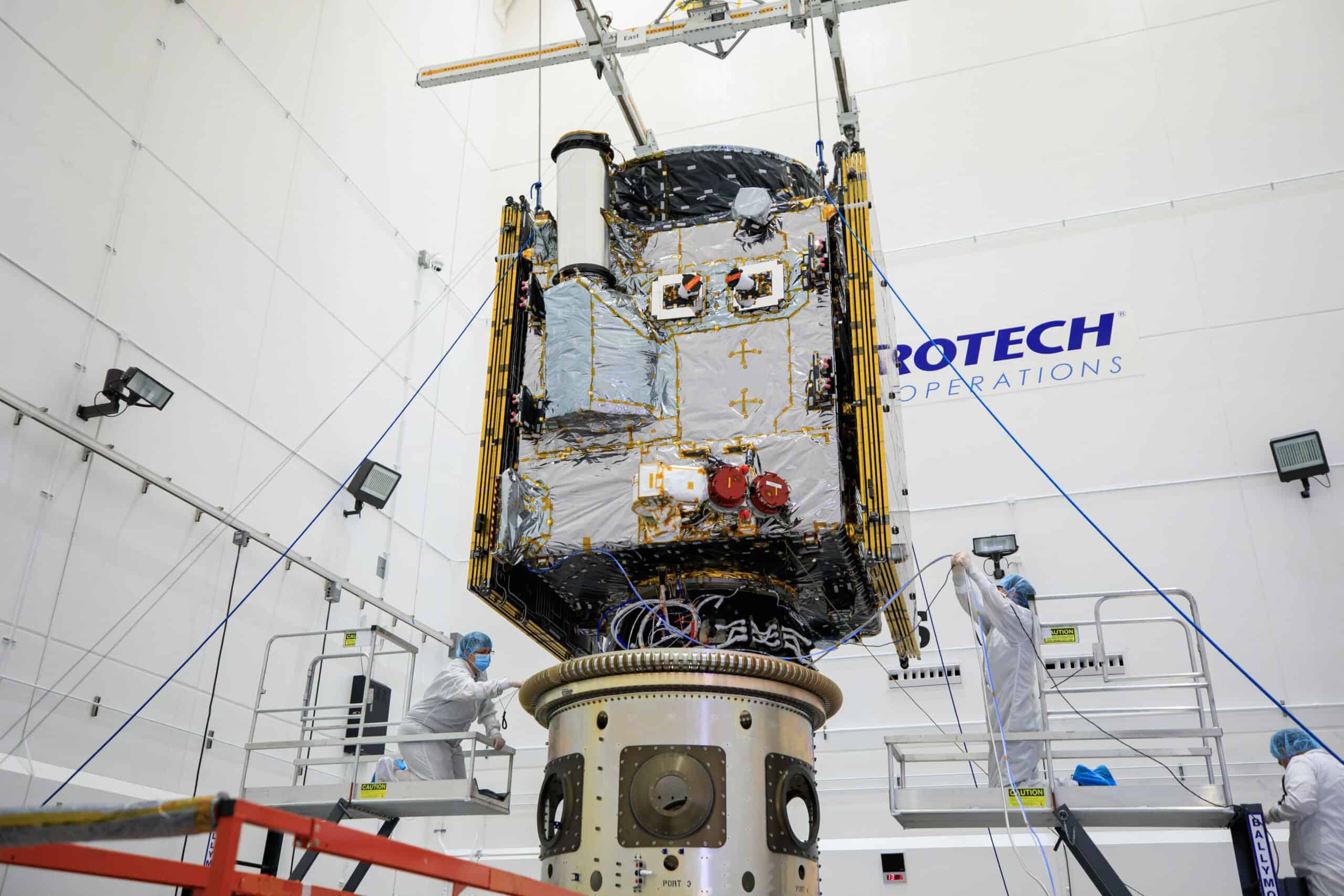
NASA has launched a mission to study an unusually metal-rich asteroid dubbed 16 Psyche. Launched from the Kennedy Space Center in Florida at 10:20 local time today via a SpaceX Falcon Heavy rocket, the $1.2bn mission is expected to reach the asteroid in 2029.
16 Psyche is around 220 km in diameter and consists of almost pure nickel–iron metal. It was discovered in 1852 by Italian astronomer Annibale de Gasparis, who named it after the goddess of the soul in ancient Greek mythology. Located in the asteroid belt between Mars and Jupiter, astronomers speculate that the asteroid is the exposed core of an early planet that lost its rocky outer layers due to a number of violent collisions billions of years ago.
In 2021, astronomers used the Atacama Large Millimeter/Submillimeter Array (ALMA) to gain a more detailed picture of the composition of the asteroid finding that Psyche’s composition is not uniform and its surface is at least 30% metal.
The Psyche mission will help scientists understand how planets and other bodies separated into layers – including cores, mantles and crusts. On it way to the asteroid — a total journey of 3.6 billion kilometres — the craft will conduct a Mars fly-by in 2026. Once Psyche arrives at the asteroid in 2029 it will spend over two years analysing the body from four different orbit that get successively closer.
It will use a gamma-ray and neutron spectrometer to determine the chemical elements that make up the body as well as a multispectral imager to provide information about the mineral composition of Psyche as well as its topography. It will use a magnetometer to look for evidence of an ancient magnetic field. The craft will also test a new laser communication technology, called Deep Space Optical Communication.
Launch delays
The mission was originally expected to launch in 2022 but was delayed due to issues with its navigational software. An independent review board found later that year that the delay was caused by staff shortages at Caltech’s Jet Propulsion Laboratory, which manages the mission.

Astronomers capture most detailed images of large, rare metal asteroid
The craft was then scheduled to launch during a launch window that opened on 5 October, but shortly before then officials discovered that a subcontractor had provided incorrect data concerning the spacecraft’s thrusters. The problem was soon fixed, with a new window opening from 12 October.
Psyche was selected in 2017 from five proposals as part of the space-agency’s Discovery Program, which was created in 1992 and launches smaller missions under shorter development times. Yet while the initial estimated cost of the craft was $450m, at $1.2bn Psyche is one of the most expensive missions to be launched as part of the Discovery Program.
Psyche was chosen in 2017 alongside the Lucy mission, which launched in 2021. It will visit Jupiter’s Trojan asteroids and study the origins of giant planets by looking at the fragments left over from their formation.
